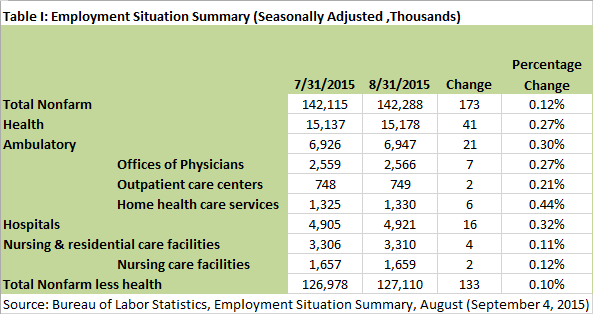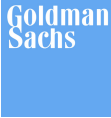Health Care One Quarter of August Job Growth
This morning’s Employment Situation Summary, which showed slow job growth overall, contained a big jump for health services: 23 percent of last month’s jobs were in health services (see Table I).
Of the 41,000 health jobs, a little more than half were in ambulatory settings. Because of a long-term shift in the location of care, there are now almost seven million people working in ambulatory settings, versus just under five million working in hospitals. This is a positive development.












